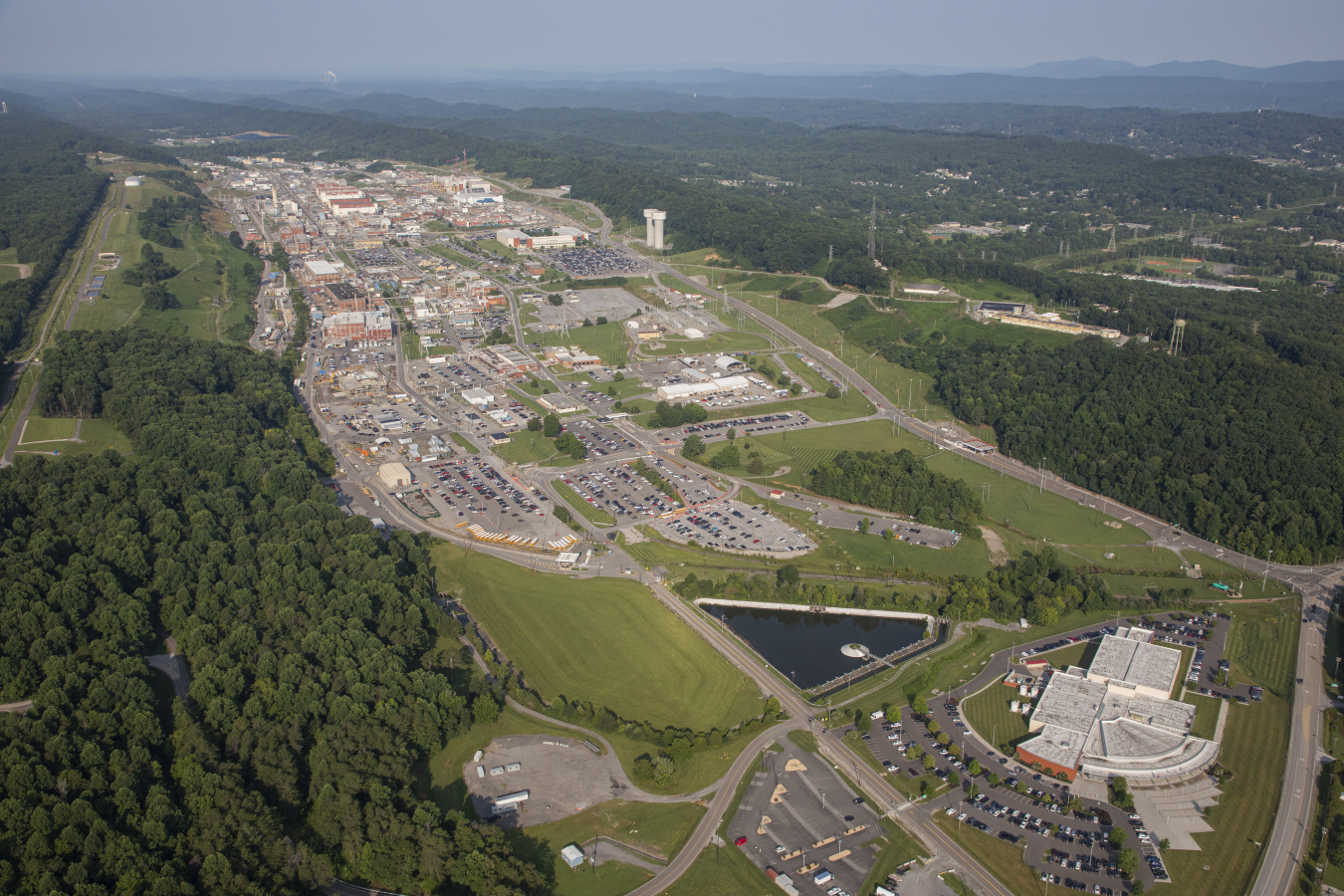
An aerial view of the Y-12 National Security Complex.
The Y-12 National Security Complex is one of the nation’s most important national security assets. Today, it has three primary national security missions that protect the United States and its allies. Those missions include maintaining the U.S. nuclear stockpile, reducing global threats through non-proliferation, and fueling the U.S. Nuclear Navy. The site has evolved to become the complex the nation looks to for support in protecting America’s future, developing innovative solutions in manufacturing technologies, prototyping, safeguards and security, and technical computing.
Originally, Y-12 was constructed in 1943 as part of the World War II-era Manhattan Project. Early missions there included uranium and lithium separations and manufacturing nuclear weapons components.
The Cold War brought change to Y-12 as new processes for separating lithium were added and uranium enrichment missions were conducted elsewhere. During the 1950s and early 1960s, Y-12 used large amounts of mercury in the lithium separation process, and an estimated 700,000 pounds were lost in the buildings and surrounding environment.
Mercury is the highest environmental cleanup priority at Y-12 with levels exceeding regulatory standards, and Oak Ridge’s EM program is working to address the mercury that migrated into the environment. The linchpin of EM’s cleanup strategy is the Outfall 200 Mercury Treatment Facility, which is now under construction and scheduled for completion in 2027. Since mercury is highly mobile and easily disturbed, this vital piece of infrastructure will enable the demolition of Y-12’s large, mercury-contaminated facilities and subsequent soil remediation by providing a mechanism to prevent mercury from entering the nearby Upper East Fork Poplar Creek. When operational, the facility will be able to treat up to 3,000 gallons of water per minute and help Oak Ridge meet regulatory limits.
EM is also making significant investments in technology developments that will enhance mercury cleanup. The cleanup program has partnered with scientists at the Oak Ridge National Laboratory to develop and test new tools and approaches that might be more effective, reduce costs, and accelerate cleanup schedules. These new technologies will support the demolition of Y-12’s mercury-contaminated facilities, soils remediation, waste disposition, and reduction of mercury-related ecological risks downstream.
In addition to mercury cleanup, EM has started deactivating and demolishing the large inventory of excess, contaminated facilities at Y-12. Many of these Manhattan Project and Cold War-era facilities are categorized as high-risk due to their structural condition or contamination levels. While demolition is underway on some, crews are inside others performing characterization and deactivation activities. These efforts are removing risks, enabling modernization, and opening land to support national security missions.
EM’s cleanup goals at Y-12:
- Complete construction on the Outfall 200 Mercury Treatment Facility in 2027
- Demolish Alpha-2 facility by 2029
- Demolish Beta-1 facility by 2030
- Remove the inventory of high-risk excess contaminated facilities
- Complete remediation of soil, groundwater, and surface water

